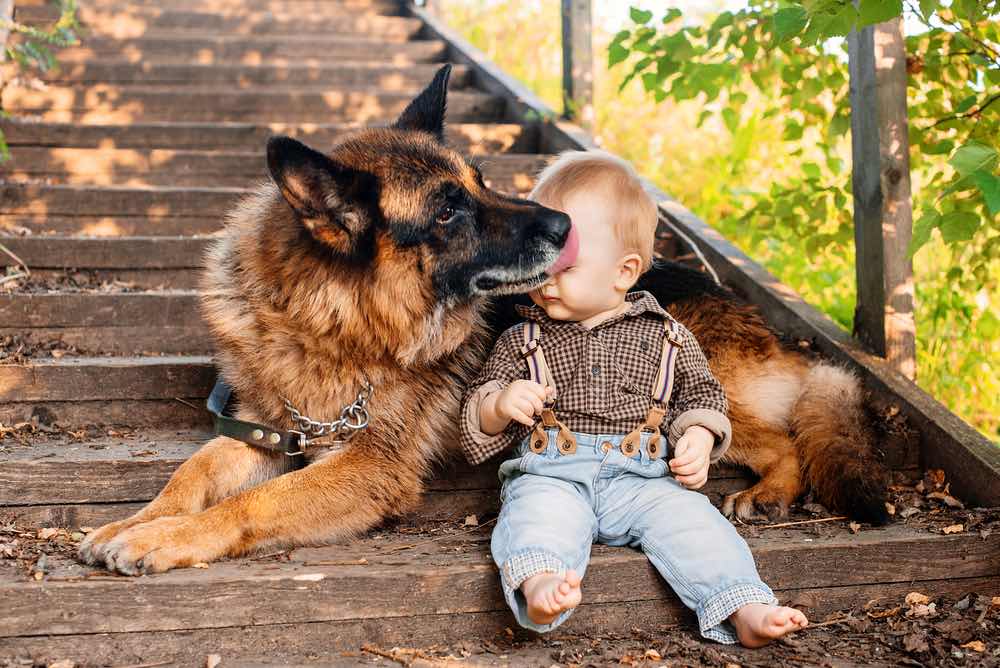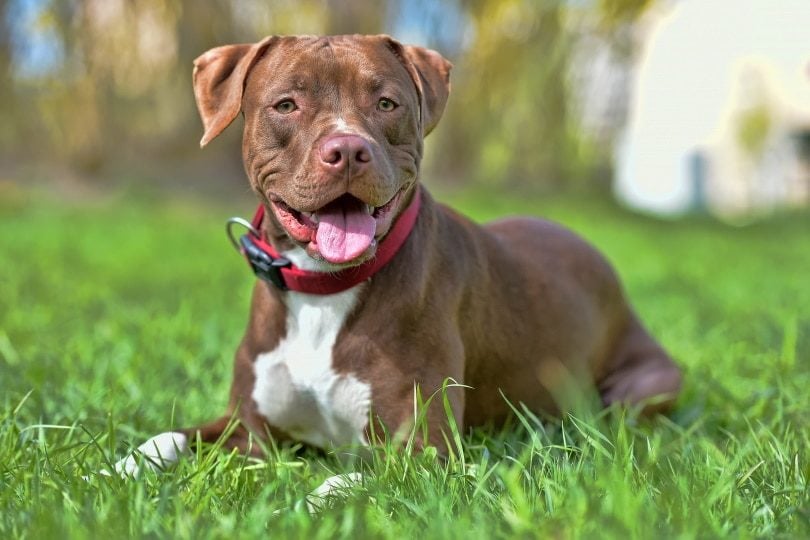12 Vet-Reviewed Surprising Bloodhound Facts (With Pictures)

Updated on
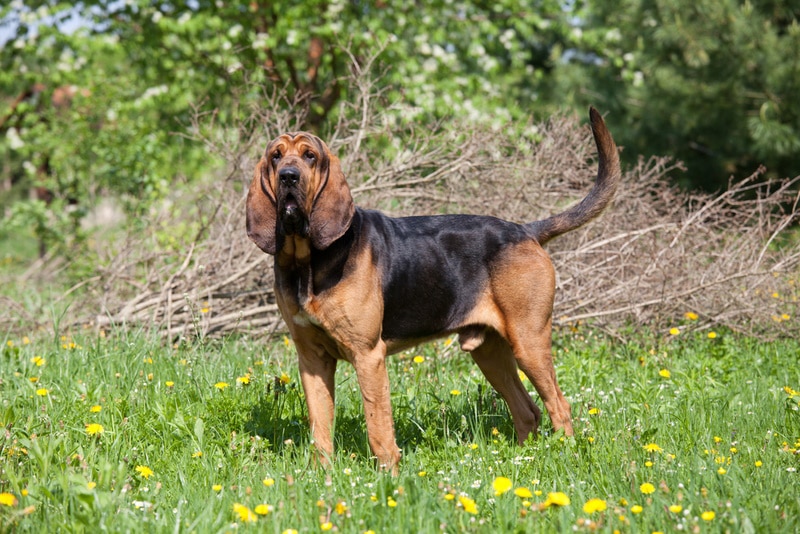
The Bloodhound is a popular breed in America and is loved by canine enthusiasts for its incredible sense of smell, deep-set brown eyes, and long droopy ears. The dog is considered to have the best ground scent in the world. However, there is more to this breed than you probably know.
While it is often portrayed as a lazy porch-dwelling breed in Hollywood movies, this dog is surprisingly energetic and intelligent, making them an ideal family pet. They are also gentle and affectionate with a distinctive anatomy and inalienable skills that separate them from other typical dog breeds.
In this article, we will highlight some incredible Bloodhound facts that will change your perspective about this often-misunderstood breed. Read on to learn more.
The 12 Surprising Bloodhound Facts
1. Bloodhounds’ Signature Long Floppy Ears and Wrinkles Have a Special Purpose
These dogs feature a loose and thin coat around the neck and head areas. The coat creates deep-hanging wrinkles and folds that most people adore. The flap skin found under their throat is called a dewlap and is their main defining feature.
Besides giving Bloodhounds a sad puppy appearance, these folds, wrinkles, and ridges actually help the dog in its tracking endeavors. The folds combined with the long floppy ears allow the dog to get smells from the ground and trap them in their sensitive noses.
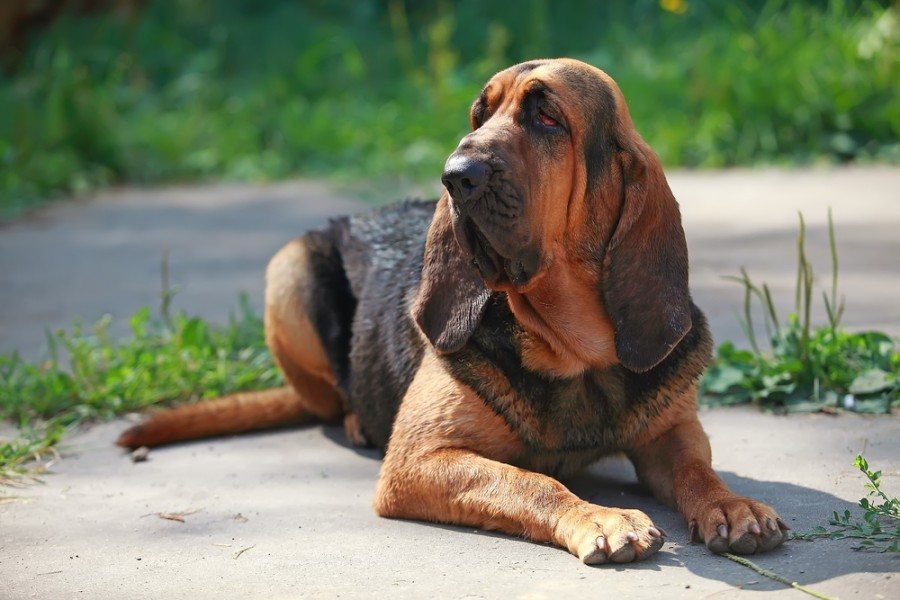
2. The Name “Bloodhound” Does Not Refer to the Dogs Trailing Ability
Most people commonly assume that this breed is called a Bloodhound because of its impeccable tracking ability on hot-blooded creatures. However, the term Bloodhound refers to the fact that the earliest breeders had to go to extreme lengths to preserve the purity of their bloodlines and record their ancestry.
3. Bloodhounds Hold the Record for the Longest Ears Found on a Dog
The long droopy ears are the signature trait of this dog breed. Breeders purposefully bred this dog with long-hanging ears to help them when tracking a scent. In fact, a Bloodhound called Tigger holds the record for the longest ears on a dog.1 His left lobe measured a whopping 13.75 inches, while the right lobe was at least 13.5 inches long.
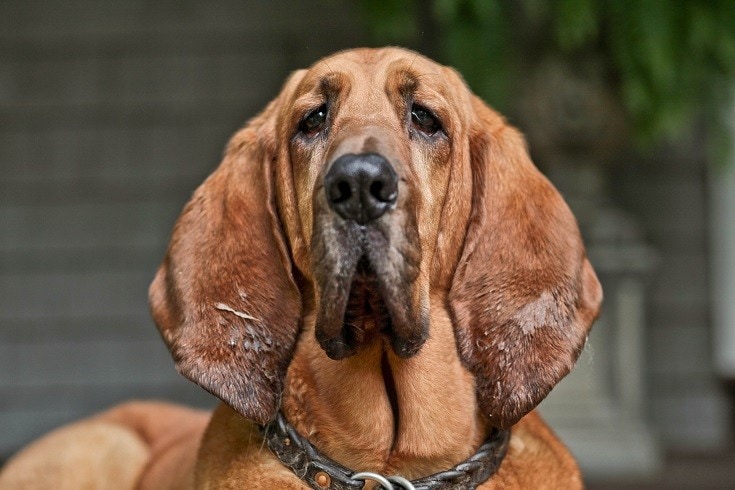
4. Bloodhounds Can Pick up a Scent From up to 130 Miles Away
Most people often refer to this breed as a “nose with a dog attached” in canine circles. This is an apt representation of the Bloodhound because they have approximately 250–300 million scent receptors, which is estimated to be the most that you can find in any breed.
Once this dog identifies a scent, they can track the specific scent without getting distracted by any other odor they may encounter for close to approximately 1,340 miles. Their sense of smell is so powerful that they can pick a scent from up to 130 miles away!
5. Bloodhounds Are Not the Easiest Breed to Train
While this breed may have unrivaled tracking skills, they can take some time to train. The breed was initially bred to trail scents. Once they get engaged, they can stay determined and focused for days. The same characteristics that make them brilliant trackers can also be detrimental, especially when they get bored.
Bloodhounds are known to be stubborn, tough, independent, and very cunning. When left to their devices, they have been known to counter-surf for treats, escape from the yard, and even chew on furniture.
Moreover, they are known to be sensitive and don’t respond well to overly stern training. Therefore, a Bloodhound needs lots of exercise, positive reinforcement training approaches, and opportunities to utilize their powerful sense of smell.
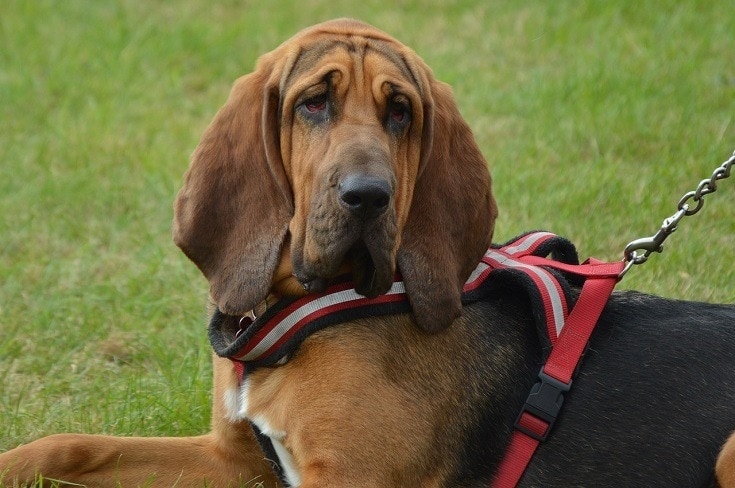
6. Bloodhounds Were First Introduced in the Police Force to Hunt a Serial Killer
Whenever people talk about the K9 police unit, one dog comes to mind: the German Shepherd. However, German Shepherds were not the first dog breed to work closely with the police force. The Bloodhound was the first breed to be incorporated into the K9 unit.
In 1880, Jack the Ripper was one of the most infamous serial killers to terrorize London. He killed many people in the Whitechapel area, getting the residents scared as police struggled to look for the elusive murderer to no avail. In that era, the concept of utilizing dogs to help solve crimes was not a thing yet. The idea was ridiculed by detectives and policemen in equal measure.
Nevertheless, the idea of utilizing the Bloodhound to track Jack the Ripper was introduced by Percy Lindley in a section of the Letter to the Editor of the Times newspaper. Since the London Metropolitan Police were running out of options, they started to experiment with scent dogs. Unfortunately, lack of experience severely hindered the dogs from tracking the serial killer.
Even though the Bloodhound was never able to track Jack the Ripper, the idea prompted the police force to experiment with working with dogs to solve crimes. Today, thousands of dogs work closely with policemen from all over the world, and we have the Bloodhound to thank for this.
7. A Bloodhounds “Testimony” Is Admissible in a Court of Law
The scent capability of this breed is considered so reliable and powerful that it can be used to corroborate testimonies offered in a court of law. American courts allow scent work results for this breed to be submitted into evidence.2
In fact, according to Guinness World Records,3 Bloodhounds were the first animals to have successfully submitted evidence to a court of law.
However, for the dog’s evidence to be allowed in court, the Bloodhound must be shown to have received sufficient training to allow them to follow humans via their tracks. The dog’s accuracy in trailing should also be tested on more than one occasion.
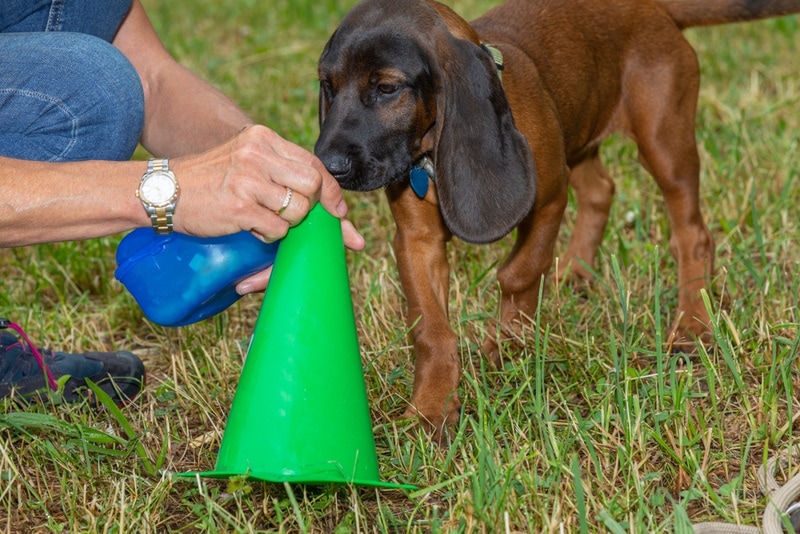
8. The Bloodhound Was the First Registered Dog in Any Kennel Club
While the first dog to be registered by the American Kennel Club was a Pointer, AKC was not the first dog club to exist. It is the second kennel club in existence, after the United Kingdom Kennel Club. The UK Kennel Club was first started in 1873, about 11 years before the AKC, and the Bloodhound was the first dog to be registered.
9. Bloodhounds Were Used in Royal Hunts
Every year, Bloodhounds were offered as a gift to the king of France, a custom that has been maintained for hundreds of years. Bloodhounds especially became popular during the reign of Henry IV between 1553 and 1610. Hunting was a favorite pastime activity for nobles and royal families in Europe.
During the hunting sessions, political negotiations, trade talks, transactions, and international agreements took place. Besides horses, Bloodhounds were some of the most prized possessions due to their impeccable sense of smell. They might not have participated in the kill, but they were used as scent-sniffing dogs while secured on a leash.
Even though Bloodhounds might have been gifted to the king for hunting purposes, they were also considered part of the feudal system, helping to bring feudal lords together to establish loyalties and form alliances.
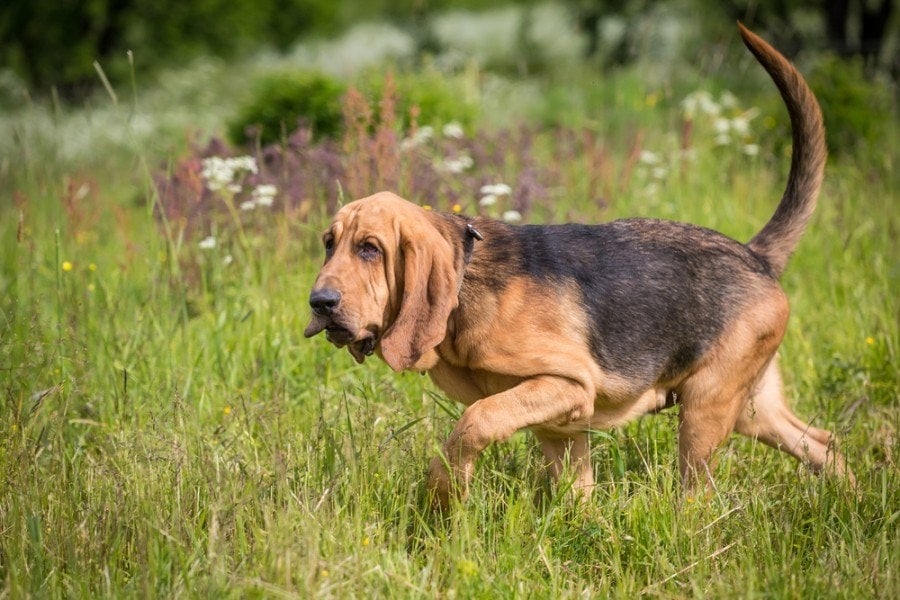
10. Bloodhounds Are Specifically Bred With Short Legs to Keep Their Noses Closer to the Ground
Bloodhounds were purposefully bred with long ears to help with tracking. However, this is not the only trait that was added to the breed. These dogs feature very short legs. Since they were not intended to run like herding or retrieving dogs, they do not necessarily require long legs.
With their short legs, they can keep their nose close to the ground, thus allowing them to walk a path continuously with their noses close to the floor while tracking a scent. If the legs were as long as those found in Great Danes, the dog would have to make a stop every few meters to sniff the floor to catch a scent.
11. Bloodhounds Have Featured in Disney Classics More Than Any Other Dog Breed
Many times, Bloodhounds have been featured in Disney Classics because Walt Disney, the founder, had a special affinity for them. For instance, the dog has been featured in “The Aristocats”, “The Lady and the Tramp”, “Fox and the Hound”, and “The Princess and the Frog”—not forgetting the “101 Dalmatians”.
These cartoon dog characters of the Bloodhound will forever remain etched in the minds of many people. Disney’s interest in Bloodhounds started back in the early 1930s when Pluto was first introduced in the Mickey Mouse Universe. He was such a hit that he soon became a regular character in the cast of Stars.
Since then, Disney has only continued to introduce Bloodhounds into their classic movies. Granted, Pluto might be officially listed as a mixed breed, but his Debut in the Mickey Mouse Cartoons was as a Bloodhound.
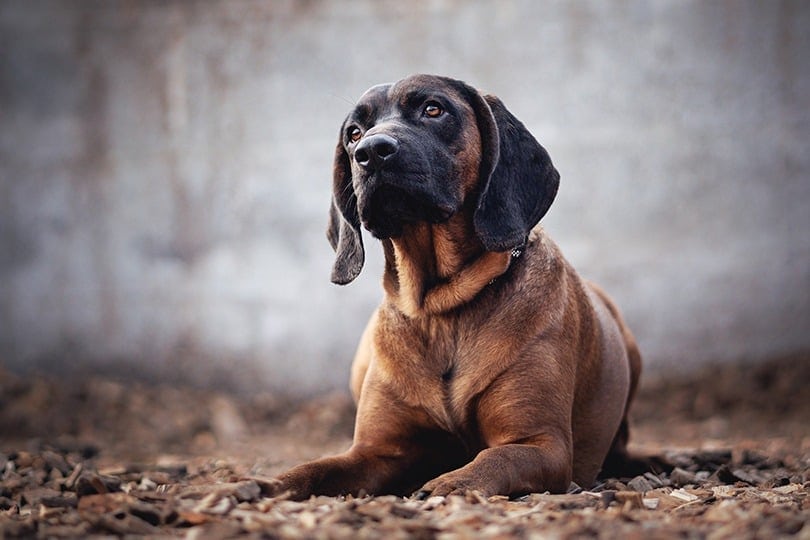
12. Bloodhounds Have the Most Scent Receptors That You Can Find in Any Dog Breed
As you may have gathered by now, this breed has the best sense of smell in the canine world, better than even Beagles or Basset Hounds.
To give you a better idea of just how powerful their sense of smell is, these dogs have 40 times more scent receptors in their nose than humans. Moreover, since this breed has a more powerful olfactory lobe, a larger nose, and increased scent receptors, it is estimated that they can identify smells approximately 1,000 times better than humans.
Conclusion
The Bloodhound is one of the largest dogs in the Hound family. These canines are highly social and were initially bred for hunting boar and deer in Europe. They feature a unique nose that aids in search and rescue missions.
The name “Bloodhound” originated thousands of years ago to represent the high status of breeding for the bishop’s hounds. From a deep chest, short legs, and droopy ears, this breed is eye-catching. While they can be quite gentle, they are overly relentless while tracking a scent. They can track a scent for hours, if not days, until they find what they are tracing.
These dogs thrive with sufficient exercise, socialization, and early training. They will also do well under the care of owners who understand their sniffing drive well enough to allow them to work with their noses.
Featured Image Credit: Lenkadan, Shutterstock


